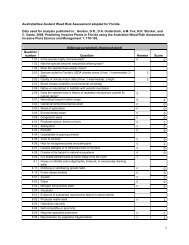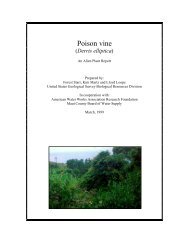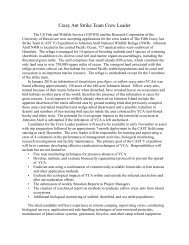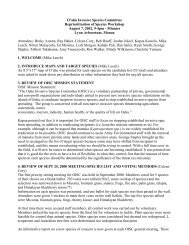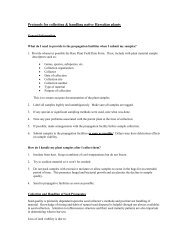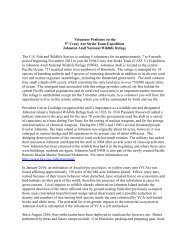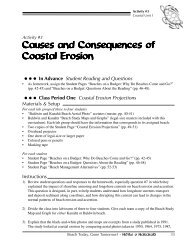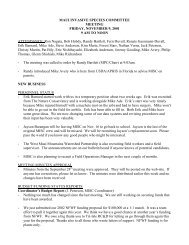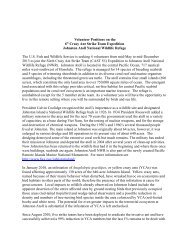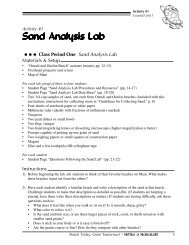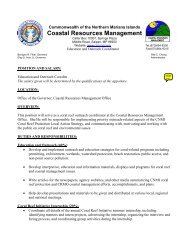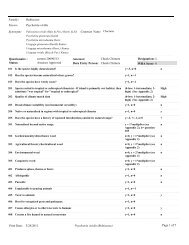Coastal - Hawaiian Ecosystems at Risk project
Coastal - Hawaiian Ecosystems at Risk project
Coastal - Hawaiian Ecosystems at Risk project
You also want an ePaper? Increase the reach of your titles
YUMPU automatically turns print PDFs into web optimized ePapers that Google loves.
Activity #1<br />
<strong>Coastal</strong> Unit 2<br />
Species Card Master<br />
Koloa or <strong>Hawaiian</strong> Duck (Anas wyvilliana)<br />
Order Anseriformes, Family An<strong>at</strong>idae<br />
• This endemic w<strong>at</strong>er bird was once found on all of the main<br />
islands except Länaÿi and Kahoÿolawe. There are now small<br />
popul<strong>at</strong>ions on Kauaÿi, Maui, Oÿahu, and Hawaiÿi. It is an<br />
endangered species.<br />
Habit<strong>at</strong><br />
• These ducks are found in lowland wetlands, river valleys, and<br />
mountain streams.<br />
Adapt<strong>at</strong>ions & Interactions<br />
• Koloa build their nests on the ground, lining them with down and fe<strong>at</strong>hers.<br />
• They feed on freshw<strong>at</strong>er veget<strong>at</strong>ion, mollusks, and insects.<br />
• Many koloa have hybridized (crossbred) with mallard ducks, meaning th<strong>at</strong> there are fewer of this endangered<br />
species than there may appear to be.<br />
Human Connections<br />
• In <strong>Hawaiian</strong>, koloa means “duck.” This species is sometimes called koloa maoli or “n<strong>at</strong>ive koloa,” to distinguish<br />
it from migr<strong>at</strong>ory or introduced ducks, also called koloa.<br />
C<strong>at</strong>tle Egret (Bubulcus ibis)<br />
Order Ciconiiformes, Family Ardeidae<br />
• This nonn<strong>at</strong>ive bird is n<strong>at</strong>ive to the Old World.<br />
Habit<strong>at</strong><br />
• C<strong>at</strong>tle egrets are common on most of the main <strong>Hawaiian</strong> Islands.<br />
On Maui, they breed <strong>at</strong> Kanahä and Keälia ponds.<br />
• C<strong>at</strong>tle egrets can be found in a variety of habit<strong>at</strong>s including c<strong>at</strong>tle<br />
pens and pastures, garbage dumps, w<strong>at</strong>ercress ponds, and taro<br />
p<strong>at</strong>ches.<br />
Adapt<strong>at</strong>ions & Interactions<br />
• They nest in large colonies (or “heronries”), often in trees.<br />
• They feed on flies, grasshoppers, other insects, and crayfish.<br />
• This species may pose a thre<strong>at</strong> to n<strong>at</strong>ive species by competing for nesting sites and food, and by preying on<br />
young birds.<br />
Human Connections<br />
• The c<strong>at</strong>tle egret was introduced in 1959 to help control pest insects on c<strong>at</strong>tle ranches.<br />
Photo: Eric Nishibayashi<br />
<strong>Coastal</strong> Connections • Höÿike o Haleakalä 27




